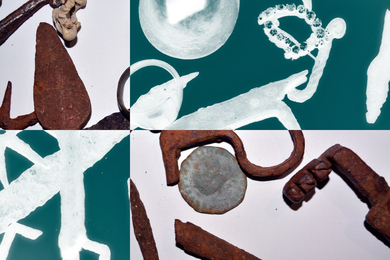Nuclear engineering and materials science are distinct but related fields. Newly appointed Battelle Energy Alliance Professor of Nuclear Science and Engineering Ju Li will straddle the two, as he applies his groundbreaking research into atomic-scale materials behavior to a broad range of challenges, including energy storage, waste management and reactor materials.
To a large degree, says Li PhD ’00, the difference between his scientific and engineering efforts comes down to time scales.
“My work involves theory and modeling of materials behavior under high mechanical stress and sometimes high temperatures,” he explains. “When you work at the scale of atoms and electrons, you think in terms of picoseconds and femtoseconds. But for engineering systems, you need to predict behavior over years, or even thousands of years for nuclear waste treatment. My primary interest is in extending the time scale of our physical models to the engineering scale.”
Over the last decade, Li has established himself as a leader in developing and applying computer simulations to gain greater understanding of fundamental nanoscale mechanical and transport properties of materials. His pioneering cross-disciplinary work has coupled continuum mechanics (in which materials are modeled as continuous masses rather than discrete particles) with meso- and atomic-scale dynamics, and has had a broad impact on the understanding of how materials behave under extreme conditions.
These scientific achievements have helped create a clearer sense of how microstructures evolve over time when exposed to stress, heat, and radiation, and have led to fundamental advances for a range of engineering challenges. These include development of new structural materials for fission and fusion reactors, better-performing battery electrodes, and improved fuel cell components. Other applications have included aerospace materials, as well as the process of vitrifying nuclear waste into a stable glass matrix.
Read full feature
To a large degree, says Li PhD ’00, the difference between his scientific and engineering efforts comes down to time scales.
“My work involves theory and modeling of materials behavior under high mechanical stress and sometimes high temperatures,” he explains. “When you work at the scale of atoms and electrons, you think in terms of picoseconds and femtoseconds. But for engineering systems, you need to predict behavior over years, or even thousands of years for nuclear waste treatment. My primary interest is in extending the time scale of our physical models to the engineering scale.”
Over the last decade, Li has established himself as a leader in developing and applying computer simulations to gain greater understanding of fundamental nanoscale mechanical and transport properties of materials. His pioneering cross-disciplinary work has coupled continuum mechanics (in which materials are modeled as continuous masses rather than discrete particles) with meso- and atomic-scale dynamics, and has had a broad impact on the understanding of how materials behave under extreme conditions.
These scientific achievements have helped create a clearer sense of how microstructures evolve over time when exposed to stress, heat, and radiation, and have led to fundamental advances for a range of engineering challenges. These include development of new structural materials for fission and fusion reactors, better-performing battery electrodes, and improved fuel cell components. Other applications have included aerospace materials, as well as the process of vitrifying nuclear waste into a stable glass matrix.
Read full feature






